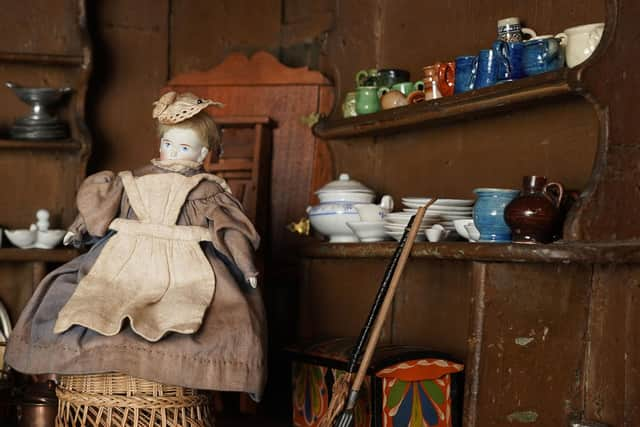Rare 18th century doll’s house – 'rediscovered' in a children’s hospital in 1886 – to be auctioned live online
The Evans Baby House, part of the Five Centuries: Furniture, Paintings and Works of Art auction, is an amazing piece of social and cultural history showcasing 19th century interiors and tiny artefacts.
The Baby House, an earlier term for what became known as a doll’s house, was first documented in a book by Vivien Greene in 1955, reprinted in 1979, in which she recounts the fascinating history of The Evans Baby House. Ms Green, a notable authority on English dolls’ houses of the 18th and 19th centuries, was also the wife of novelist Graham Greene.
Advertisement
Hide AdAdvertisement
Hide AdGreene wrote of this particular doll’s house: “This story of its recovery is in its miniature way as exciting and touching to read as any history of a real house bought back by its original owners after alienation…”


The house came into the ownership of the Evans family in Buckinghamshire in the early 19th century and was given to a female member, Anne, by a Miss Hancock (thought to be her godmother).
Anne Evans (1820-1870), an English poet and composer, and her sibling Emma, were sisters of archaeologist, geologist and collector, Sir John Evans (1823-1908). Sir John went on to have a son, Sir Arthur Evans (1885-92), their nephew, and the archaeologist best known for his excavation of the so-called Palace of Minos in 1900 and his discovery of the Minoan civilisation.
Anne’s sister Emma Hubbard, (née Evans), became the biographer of their doll’s house, detailing that some time later it was given to a younger member of the Hancock family, the original owners, and was never heard of again until 1886.
However, by remarkable coincidence, in January of that year, Emma visited the Evelina Hospital for children in London and happened to see and identify the house, buying it back for a donation of four guineas in 1890.
After 'rescuing' The Baby House, Emma set about renovating it. A special feature from this era being miniature framed photographs depicting members of the Evans and Hubbard families, which hang in the first-floor drawing room.
The original tinted prints in the upper and middle floors were retained, one of which depicts the Gothic tower at Whitton Park, Middlesex, as well as a small sepia drawing by her father.
It is thought that Emma sourced some of the current furniture, which includes a chest of drawers on the ground floor, 19th century bedroom furniture and an earthenware dinner set, complete with original box. Later additions include the children in the nursery and a male doll which Emma described as having “mutton-chop whiskers”.
Advertisement
Hide AdAdvertisement
Hide AdEmma is believed to have passed the doll’s house to her brother, Sir John, and through him by descent to his daughter, granddaughter and great-granddaughter, the late Mary Harley (née Weir). Mary (1925-2019) was brought up in rural Suffolk and educated at the Universities of St Andrews and Oxford.
Theo Burrell, the specialist at Lyon & Turnbull responsible for the sale said:
“This is an exceptional doll’s house that tells a terrific story.”
Bidding for the house will start at £15,000 ahead of the auction on 24 February.
A message from the Editor:Thank you for reading this article. We're more reliant on your support than ever as the shift in consumer habits brought about by Coronavirus impacts our advertisers.
If you haven't already, please consider supporting our trusted, fact-checked journalism by taking out a digital subscription.
Comments
Want to join the conversation? Please or to comment on this article.
